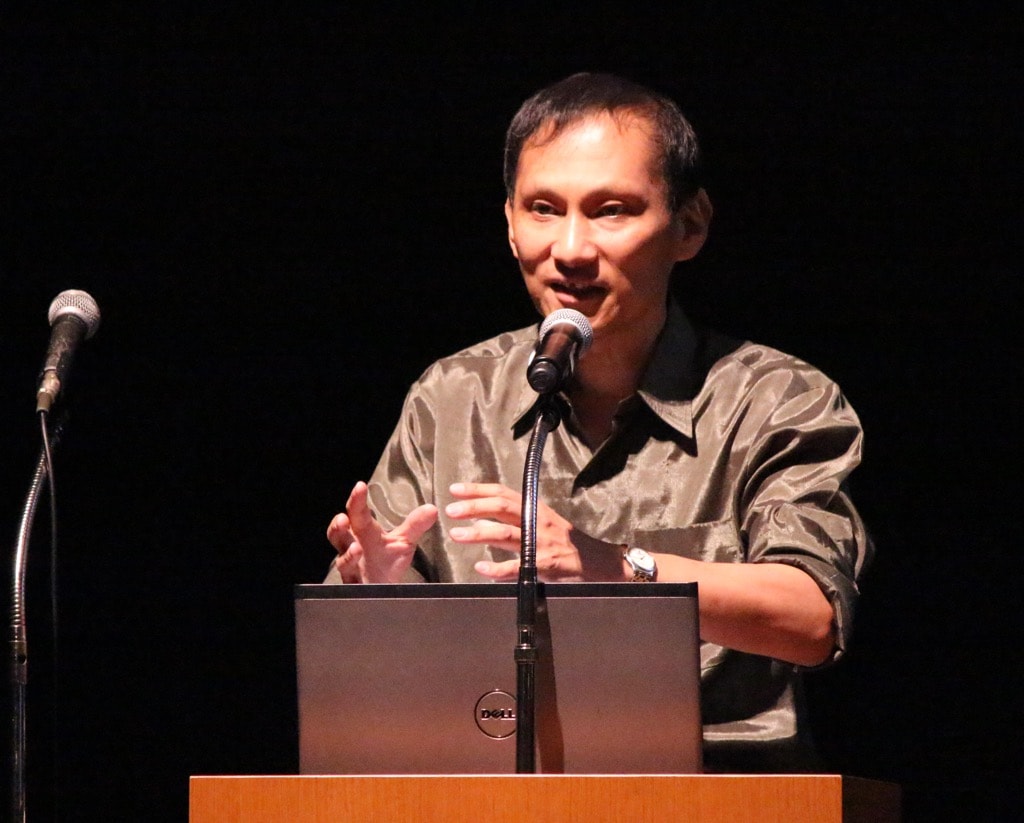Masataka Okamoto’s Profile
I, Masataka Okamoto, was born and grew up in Izumo. Since the end of 1980s, the focus of my work has been the protection and promotion of the rights of ethnic minorities. I studied at the Capital Normal University and the Central University for Nationalities in Beijing, China for eighteen months from 1991 to 1993. I served as the secretary for IMADR (International Movement against All Forms of Discrimination and Racism) http://www.imadr.org/ from 1993 to 1995 and was the SMJ (Solidarity Network with Migrants Japan) Vice-Secretary General http://migrants.jp/ from 2004 to 2014. After joining the College of Ethnic Studies at San Francisco State University as a visiting scholar for one year from April 2008 to March 2009, I lectured on the Hidden Diversity of Japanese Peoples.
I joined the staff of Fukuoka Prefectural University in 2000.
Academic Interests
I have compiled various reports and submitted statements in support of UN activities and the strengthening of minority rights. My studies at the Central University for Nationalities, along with my extensive field work on the bilingual education of Chinese minorities (I made follow-up visits in 1994, 1995 and 1998), provided the basis for my first independently-authored book, Minority Education and Language Policies in China (1999, re-published 2008).
Since the latter half of the 2000s, I have been investigating new ways in which to deconstruct theories relating to Japan’s nation building. These theories seek to explain Japan’s transformation from a multi-ethnic to homogeneous nation via a “fusion of ethnic groups” or “melting pot” theory over a time frame spanning the latter half of the 19th century.
My research seeks to reveal the hidden internal diversity of Japan through the objective portrayal of ethnic groups such as the Izumo (my personal ethnicity and similar to the Celtic people in the British Isles in relation to the historically dominant group), the Emishi, the Kumaso and the Hayato, all of which have distinct historical origins, cultures and languages from the Yamato.
In my second independently-authored book, Japan’s Nation Building from the Perspectives of the Izumo, the Emishi and the Kumaso (2014), I revealed the true processes behind the creation of the nation state and how the Yamato become culturally dominant in terms of Japanese national identity. The book touches upon how the geographic areas of Kansai and Tokyo facing the Pacific become the cultural and political centers of Japan and how the Japanese language was standardized while categorizing other distinct languages as “dialects”.
In my third independently-authored book, People, Religion and Culture Originated from the Izumo (a compilation of a series of 104 newspaper articles spanning nearly five years), I revealed an alternative Japanese history based on the movements of the Izumo. The research component was conducted by examining place-names, shrines, and archaeological data. The book elucidates migration via sea roads and the spread of a culture quite distinct from that associated with the Yamato.
For more information (in Japanese): http://researchmap.jp/read0113942/

